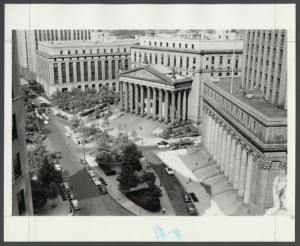
San Francisco’s Contemporary Jewish Museum Announces Temporary Closure

**San Francisco’s Contemporary Jewish Museum Faces Temporary Closure Amid Financial Struggles**
The Contemporary Jewish Museum (CJM) in San Francisco has announced plans to close its doors to the public for a year, citing a challenging financial landscape and a significant decrease in attendance post-pandemic. Scheduled to shut its galleries indefinitely starting December 15, 2024, the museum is implementing these measures in an effort to ensure long-term survival, though it stresses that the closure is intended as a temporary step.
### A Financial Landscape Still Recovering from the Pandemic
Like many cultural institutions, the CJM has faced difficulties returning to pre-pandemic visitor numbers and financial support. A museum spokesperson noted, “The CJM has been weathering a challenging financial landscape, compounded by attendance and general support that have not fully recovered since the pandemic.” The decision to close is described as “proactive” to protect the museum’s future, rather than being a sign of permanent closure, the spokesperson stressed.
As part of this restructuring effort, the museum plans a significant reduction in its staffing levels. It was reported in the *Jewish News of Northern California* that approximately two-thirds of the museum’s 30-member staff will be laid off over the coming months. In a unanimous decision, the CJM’s 19-member board approved the closure and workforce reduction as a necessary step for sustainability during a period of financial strain.
### A Storied History within San Francisco’s Jewish and Artistic Communities
Founded originally as a small gallery space within the Jewish Community Federation of San Francisco, the CJM moved to its current home in 2008 in a monumental building designed by architect Daniel Libeskind. Its geometric annex, a standout structure, became both an architectural and cultural fixture within the city. The museum has long served as an important hub for exhibitions that explore Jewish culture, art, identity, and history.
However, despite this significant architectural and cultural presence, the museum has found itself in choppy waters when it comes to leadership and public reception. Over the last few years, it has experienced substantial leadership shakeups and publicized controversies that have complicated its efforts to stabilize after pandemic disruptions.
### Challenges with Leadership and Public Protests
The museum’s executive leadership has changed multiple times over a short period. Chad Coerver, the museum’s previous Executive Director, resigned in June 2023 following a brief tenure of under two years. Before him, Lori Starr had led the museum for over seven years before stepping down in 2020.
Recent protests against the museum have also clouded its public image. This year, the anti-Zionist Jewish artist collective, California Jewish Artists for Palestine (CJAP), organized actions accusing the museum of being non-transparent about its relationships with Israeli governmental and pro-Zionist organizations. The protests culminated in one artist famously breaking part of her sculpture during a CJAP demonstration within the museum earlier this year. Artists also withdrew their works from the “California Jewish Open” exhibition in protest.
### The Path Ahead: A Year for Restructuring
Interim Executive Director Kerry King expressed optimism despite the museum’s current challenges. “It is far better for us to take necessary steps towards restructuring now, rather than waiting until we no longer have options,” King stated. She acknowledged the emotional toll the decision had taken, particularly on the museum’s dedicated staff, whom she praised for their tireless work to uphold the CJM’s mission.
Though the galleries will be closed come December, the museum has promised that admission will be free until the closure date, allowing members of the public an opportunity to visit. No official date has been given for reopening, though the museum hopes to resume operations after a year-long break. According to management, the year’s break will allow time to reassess and recalibrate operations in a more sustainable manner for the future.
### Continuing Support for Art and Culture
While the announcement of the closure may come as a disappointment to many, it underscores the evolving financial realities many cultural institutions face today. As museums around the world grapple with finding new models of support, San Francisco’s CJM is one of several institutions taking drastic measures in hopes of securing its future.
The CJM’s closure is a poignant reminder of the balancing act required to maintain cultural spaces that rely significantly on visitor donations, philanthropic endeavors, and consistent community support. Public institutions like CJM serve as cultural stewards—spaces for reflection, education, and interaction with global and local histories. Time will tell how this restructuring phase will shape the museum’s future, but many will be watching and awaiting the return of what has long been a vital part of San Francisco’s art world.
### Support for Independent Art Journalism
As we witness the struggles of prominent cultural institutions such as the CJM, it serves as a stark necessity for continued support of independent art journalism. Publications like *Hyperallergic*, which bring these stories to light, operate without the influence of large corporate or elite interests. Their coverage of events and